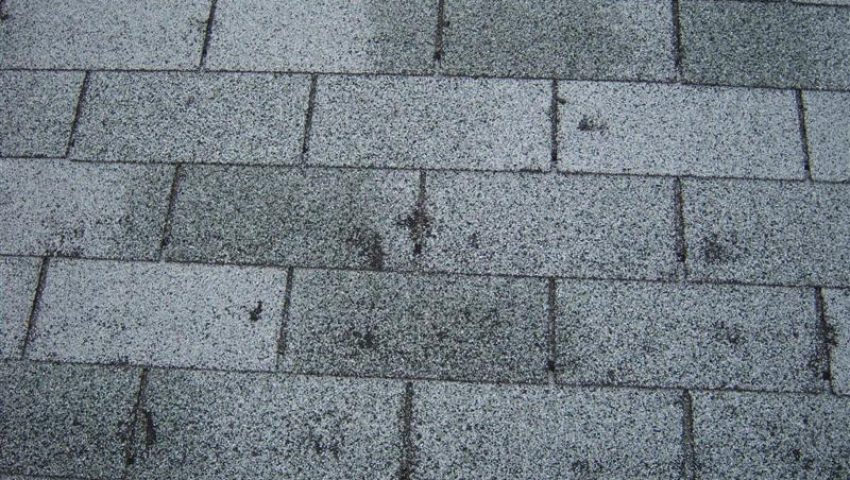After a hail storm, if your roof is not leaking, you may assume you have no roof hail damage. Did you know that most hail damage does not cause roof leaking right away? Many homeowners think that if there are no roof leaks, then there is no roof hail damage. The truth is that it may take a long time for roof leaks to show up after a hail storm.
Is roof hail damage visible?
After a hail storm, roof hail damage may not be immediately evident. As a homeowner, your first thought is that your roof isn’t leaking so there must not be any hail damage. However, hail damage on roof is not always obvious, especially to the untrained eye.
The impact from hail can cause latent roof damage that over time can create premature aging of the shingles. Even if there is no obvious visual damage, it doesn’t mean there isn’t hail damage on the roof. Latent damage may not appear for many months.
What does roof hail damage look like?
In general, roof hail damage looks like indentations, divots or small fractures on the surface of the shingle. Because each hail storm is unique, the hail from that storm will vary in size, shape and density as well as how hard and fast it falls from the sky. The impact of hail compacts the layers of asphalt and fiberglass into a small crater. Imagine an asteroid hitting the earth and how it leaves behind a huge crater. This is what a hail storm does to your roof.
If you look at your roof and there is no obvious damage, check for any indentations on the metal flashing, on the siding, the chimney caps and the flashing that surrounds a skylight. Also look at the paint on the siding and window frames and check the awnings for any dings or divots. Check gutters and downspouts, window screens, the deck, and anything made of soft metal such as a mailbox or patio furniture.
When roof hail damage is left untreated, it can cause further damage in your home such as a wet attic, which can lead to mold and water leaks through the ceiling.
What causes a shingle to leak?
Roof hail damage will increase the natural erosion of asphalt shingles. After it rains, the rainwater runs over the indentations and divots, goes through the small fractures on the shingle surface, and causes the shingle to erode at a faster rate. This happens because the lack of granules leaves the shingle vulnerable to UV and erosion. Eventually, rainwater disintegrates the shingle by seeping through to the bottom layer of the shingle. When this occurs, the rainwater works its way into your home because the shingle has lost its ability to repel water.

The best way to avoid a potential roof leak is to recognize hail damage very soon after a hail storm. Most homeowners are not trained to detect roof hail damage and for this reason, you need a hail damage roof inspection from a qualified roof inspector.
Don’t wait for your roof to start leaking before you get a hail damage roof inspection. Get a roof inspection as soon as possible after a hail storm. The longer you wait to get the roof inspection, the longer it takes to go through the insurance claims process to start the roof repairs. At Peak to Peak Roofing, our qualified roof inspectors will come to your home or business to complete an extensive hail damage roof inspection. Contact us today to schedule a visit.

